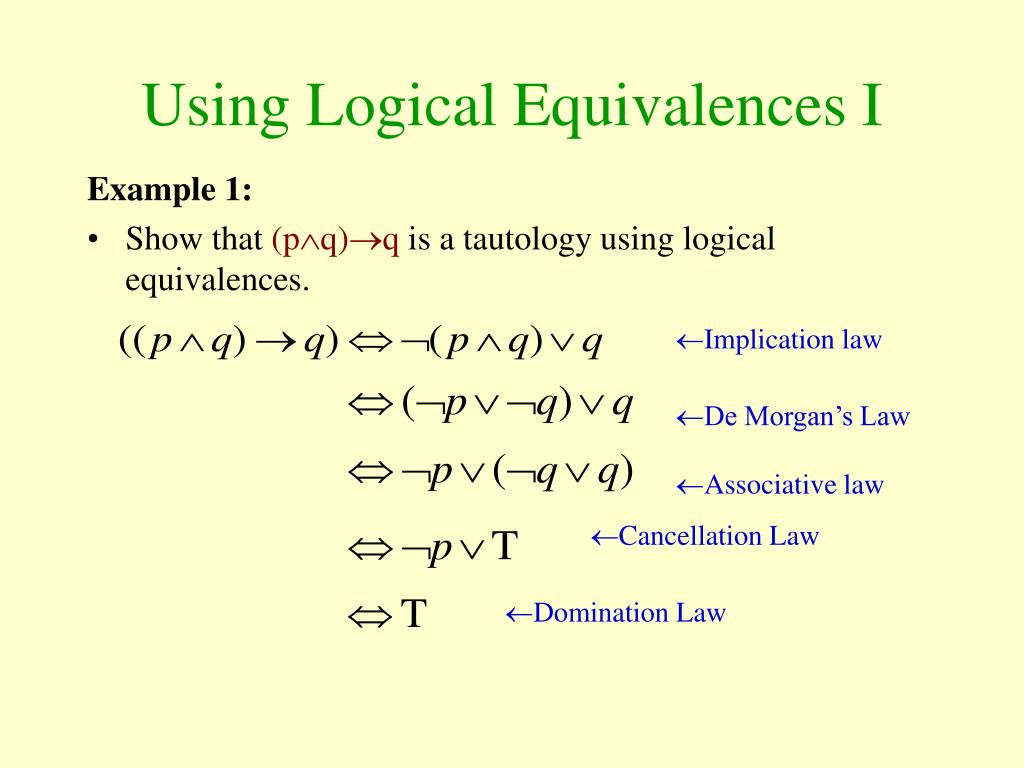
The expression in its entirety is effectively stating that the statement "variable A or variable B" is logically equivalent to the statement "variable B or variable A." How is logical equivalence determined?Īn expression's statements are considered logically equivalent if they return identical truth values for every row in a truth table. This means that the statement returns a true value if either variable is true or if both variables are true, but it returns a false value if both variables are false. Each statement uses the OR Boolean function (∨) to indicate an inclusive disjunction between variables A and B. The expression includes the statements A ∨ B and B ∨ A, which are connected together by the IIF function. This expression provides an example of logical equivalence between two simple statements: The double arrow is sometimes referred to as an IIF function. The relationship between the two statements translates verbally into "if and only if." In mathematics, logical equivalence is typically symbolized by a double arrow (⟺ or ⟷) or triple lines (≡). Range operator, which produces one reference to all the cells between two references, including the two references.Logical equivalence is the condition of equality that exists between two statements or sentences in propositional logic or Boolean algebra. Where A1 holds "Last name" and B1 holds "First name", =A1&", "&B1 results in "Last name, First name".Ĭombine ranges of cells for calculations with the following operators. Use the ampersand ( &) to concatenate (join) one or more text strings to produce a single piece of text.Ĭonnects, or concatenates, two values to produce one continuous text value When two values are compared by using these operators, the result is a logical value-either TRUE or FALSE. You can compare two values with the following operators. To perform basic mathematical operations, such as addition, subtraction, multiplication, or division combine numbers and produce numeric results, use the following arithmetic operators. There are four different types of calculation operators: arithmetic, comparison, text concatenation, and reference. Using parentheses allows you to change that calculation order.

Excel follows general mathematical rules for calculations, which is Parentheses, Exponents, Multiplication and Division, and Addition and Subtraction, or the acronym PEMDAS (Please Excuse My Dear Aunt Sally). Operators specify the type of calculation that you want to perform on the elements of a formula.


 0 kommentar(er)
0 kommentar(er)
